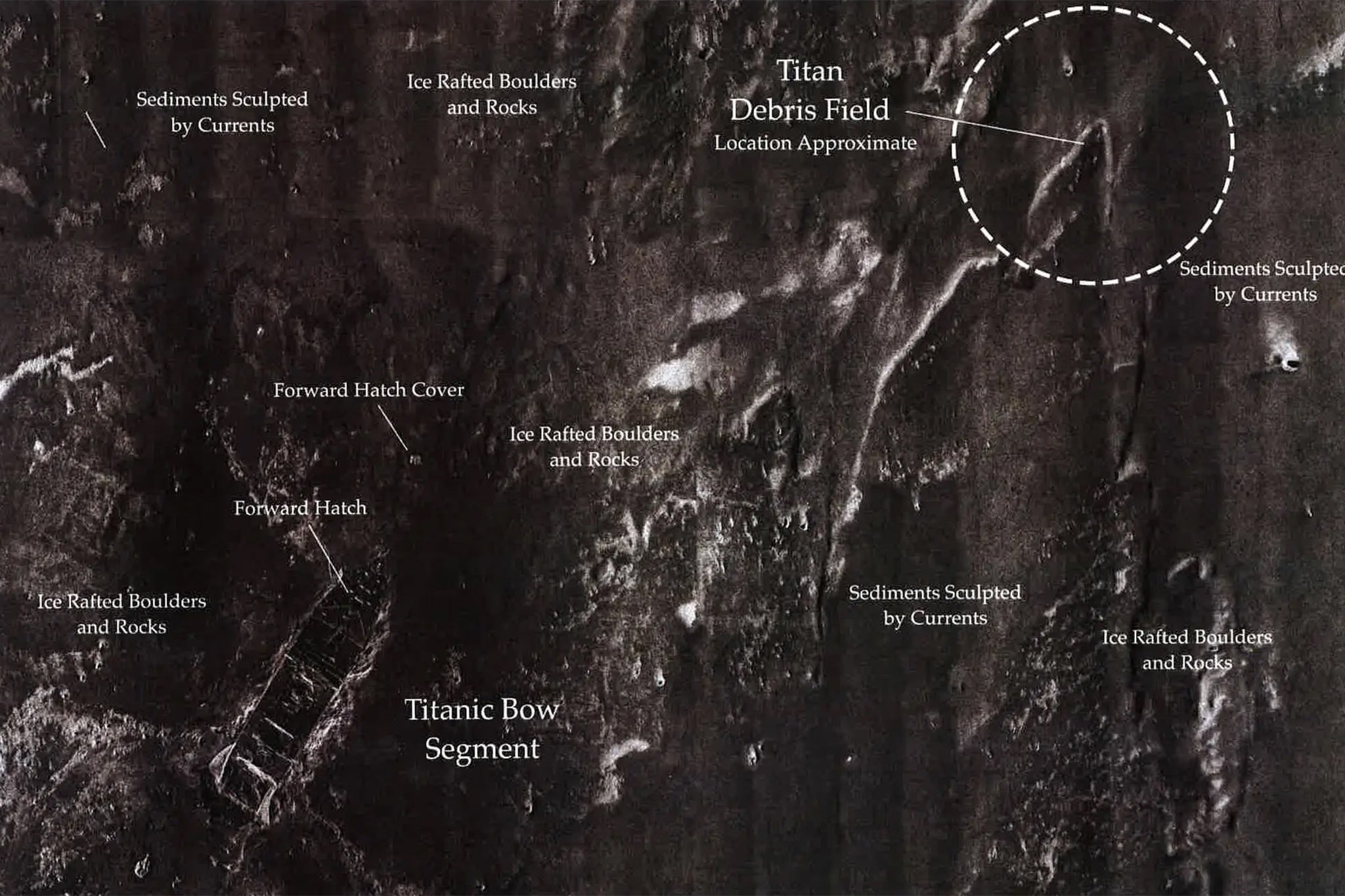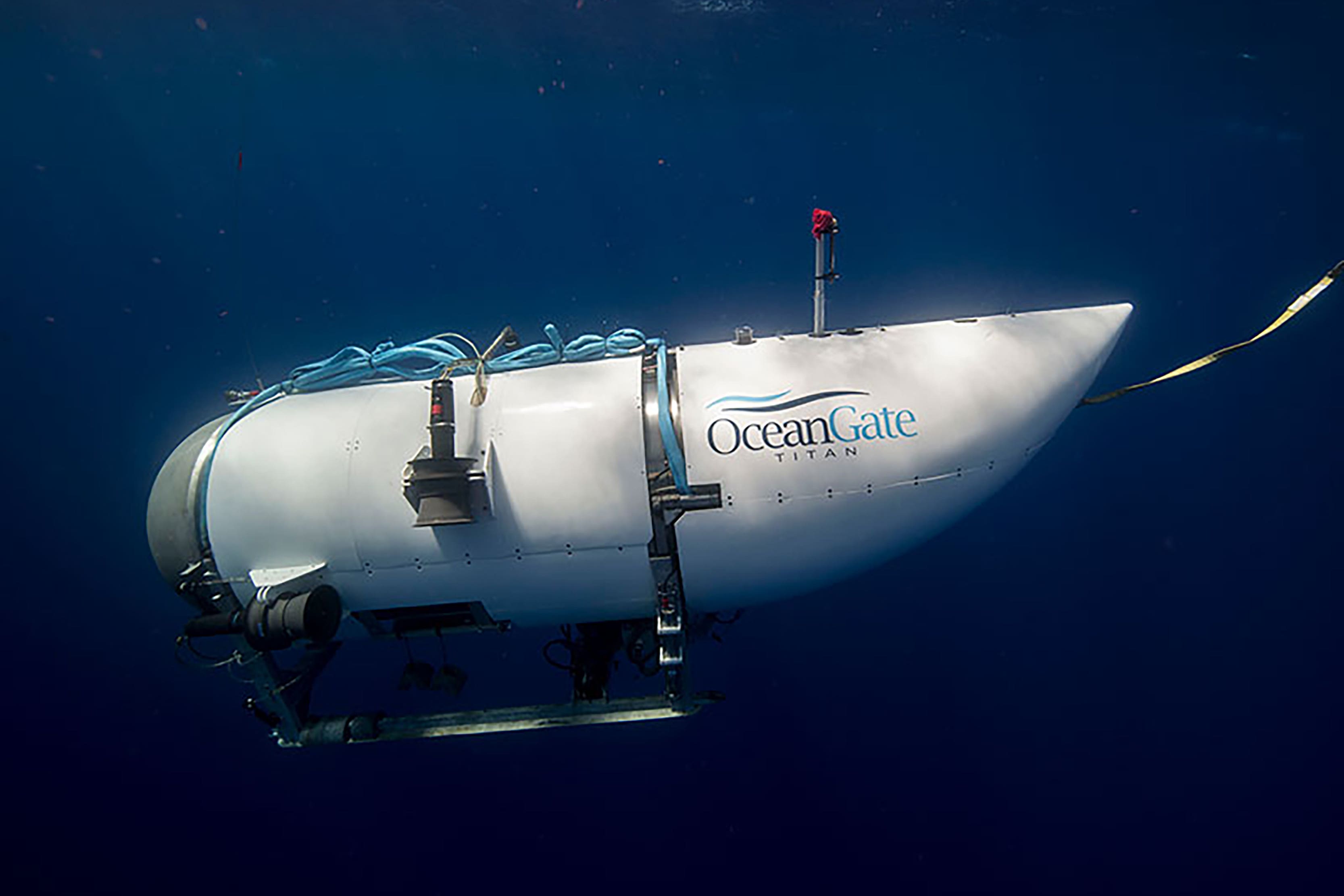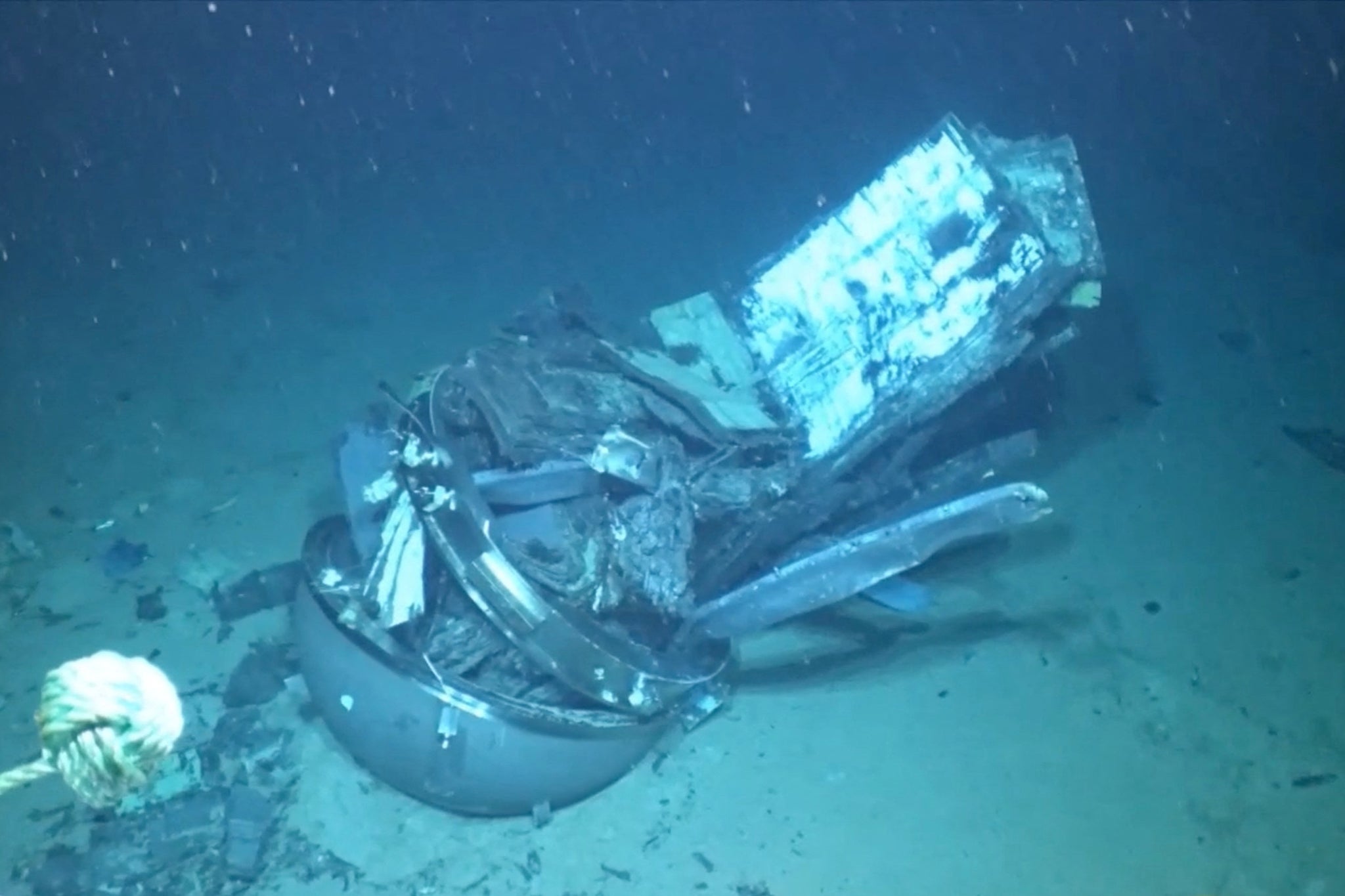Map shows how close Titan came to Titanic wreck after deadly implosion
The debris field was found close to the Titanic wreck
A map has been released showing how close the doomed Titan submersible came to the Titanic when it suffered a catastrophic implosion in June.
The Titanic tourist sub, as it was better known, charged $250,000 a head to see the legendary liner to customers known as citizen explorers.
A public inquiry is being held by the Titan Submersible Marine Board of Investigation (MBI), examining how the uncertified vessel was allowed to dive almost two and a half miles to the bottom of the North Atlantic to a wreck which has been protected since 2001 by the UNESCO Convention on the Protection of the Underwater Cultural Heritage.
According to reports, the vessel was subject to no safety regulations because the Titanic itself sits in international waters.
The map was released on Tuesday (24 September) by the US Coast Guard, showing how the debris stretched over an area of 322,917 square feet, as confirmed by an official to Popular Science.
The story caused a worldwide sensation last summer when the submersible was initially reported missing, prompting an international search and rescue mission over an area of 435 miles (700 kilometres) off the coast of Newfoundland, Canada, where the Titanic met her icy fate over 100 years ago.
With a limited supply of oxygen onboard, the world waited to discover the fate of the Titan’s five occupants.
At the time, several theories circulated in the media about what had happened, including the suggestion that the submersible could have become entangled in the wreckage of the Titanic itself.
While the Titan’s last known position before the implosion was 1,600ft away from the bow of the Titanic, its debris was found much closer to the bow at 300m away, Coast Guard officials said.

The implosion claimed the lives of OceanGate CEO Stockton Rush, 61, Titanic expert Paul-Henri Nargeolet, 77, British billionaire Hamish Harding, 58; Pakistani billionaire Shahzada Dawood, 48; and his son Suleman Dawood, 19.
After hitting an iceberg, the Titanic split in two and lies in two sections around 2,600ft apart.
The stern was mostly destroyed in the sinking, which is why the bow of the ship has been documented in so much more detail. A representative for OceanGate declined to comment when asked by The Independent if any of their expeditions ever went to the stern section.
The US Coast Guard, however, said: “The Marine Board only has evidence confirming the Titan expeditions visited the bow section of the RMS Titanic wreckage.”


Former OceanGate operations director David Lochridge testified last week that after raising several concerns about the design of Titan, he was fired by the company.
“The whole idea behind the company was to make money,” Mr Lochridge testified at the hearing which comes to a close tomorrow (27 September). “There was very little in the way of science.”
National Transportation Safety Board engineer Don Kramer later testified this week that he believes the catastrophic implosion was caused by the vessel’s carbon fibre hull, which showed “anomalies”.
The Independent has reached out to the US Coast Guard for comment.
Join our commenting forum
Join thought-provoking conversations, follow other Independent readers and see their replies
Comments